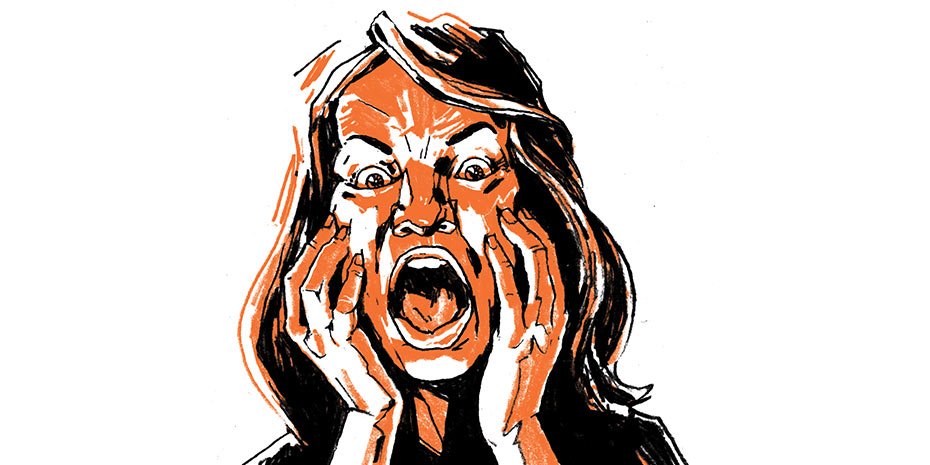SO LONG AND THANKS FOR ALL THE FLESH: MONSTERS, MOVIES, OURSELVES


In 1919 Freud asked the question: “What is horror?” And what a looming question it was. Freud coined the term “the uncanny” to describe the arousal of dread, and within that term is where we now place the supernatural, the eerie or unequivocal terror. Fear coils in your stomach and clutches at your heart. It’s an unpleasant emotion we usually do our best to avoid. Yet, we are drawn to horror, mesmerized even. From the creation of our earliest myths to the 21st-century, a vehicle for our collective fears has been ‘The Monster.’ Thus, from the first days of cinema, filmmakers have put monsters to celluloid.
But what is the monster? It can be the insidious familiar: Hannibal Lector’s charming psychopath, the introverted but nefarious Norman Bates, or the psychosexual edifice of Carrie. It could be the remarkable and bizarre, materializations of the things that haunt our deepest imagination—ghosts, Dracula, The Thing, or Frankenstein’s Monster. One could argue that the dinosaurs of Jurassic Park are a type of monster, or Jaws’s titular shark— filmic manifestations of the anxiety unleashed by the disorienting power of nature, and how despite our best efforts to tame it, nature will always triumph. There is also the antipathy that comes with the unchecked mind. In Robert Wiene’s 1920 masterwork The Cabinet of Doctor Caligari, horror comes from chicanery and deception, madmen and murder, where no one can quite be believed, nor can they believe one another.
What we can say with certainty is that monsters and the films they inhabit are vehicles for expressing our deepest societal fears. One of the most powerful forms of metaphor they signify relates to humanity’s inherent xenophobia. The impulse to feel terror at an unfamiliar culture permeates our history, and filmmakers have responded through the monster narrative.
Race and racialized imagery are common fodder in the monster film genre. Expressions of fear and anxiety about race are made manifest in films from King Kong to Candyman. Provocative explorations of race have been fertile material for many directors. Monster films can offer a place for racial minority participation on screen, but can be problematic in execution and in depictions of stereotypes—both literally and figuratively.
The monster in the 1970 film Cry of the Banshee comes in the form of sexual otherness. Set in 17th-century Ireland, the plot involves a corrupt magistrate (played wonderfully wicked by Vincent Price) who attempts to destroy a local coven of Druidic witches. Witches have long been exemplars of the patriarchal culture’s suspicion of women and sexuality, primarily women who assert sexual agency or autonomy in any form. Eastern film traditions are rife with witches as well. For example, in one particular scene in Akira Kurosawa’s 1957 retelling of Macbeth set in feudal Japan, Throne of Blood, the warrior Washizu comes upon a witch in the woods, whose portents are met with derision. The Bollywood film Kaalo is based on an Indian folktale about a witch who returns from the dead to wreak havoc on a local village. In the film, the titular witch was killed in the 18th century for purportedly sacrificing young girls to maintain her immortality—a kind of Indian Elisabeth Báthory.
Bodily discord and the ever-present anxiety of the breakdown of one’s body is elucidated in Hitchcock’s Vertigo, where the monster is infirmity. The microscopic monsters of disease in films like Outbreak or Contagion display the inherent fear when faced with the unstoppable march of pathogens beyond our understanding. In recent years, the most potent exploration of our deep fears of uncontrollable contagions is the incredible proliferation and popularity of zombies in film and television. Since George Romero’s Dawn of the Dead, zombies have slowly begun to overtake (pun not intended, I swear) prototypical monsters like vampires—sorry, Twilight. Even though they are usually representative of the fear of illness, this fascination—even preoccupation—with zombies could be read as a combination of all the aforementioned nodes of fear.
All that our societies repress and oppress have created the monster to serve a psychological function. These metaphorical embodiments are conceptual as well as cinematographic, serving a therapeutic function as well as expressing psychological conditions. Whether it is the situational plausibility of the horror or the total outlandishness and otherness of the monster, the Hollywood monster itself will never lose its hold audiences that need an outlet for the fear they can’t face within themselves. »
– Rachael Haigh



